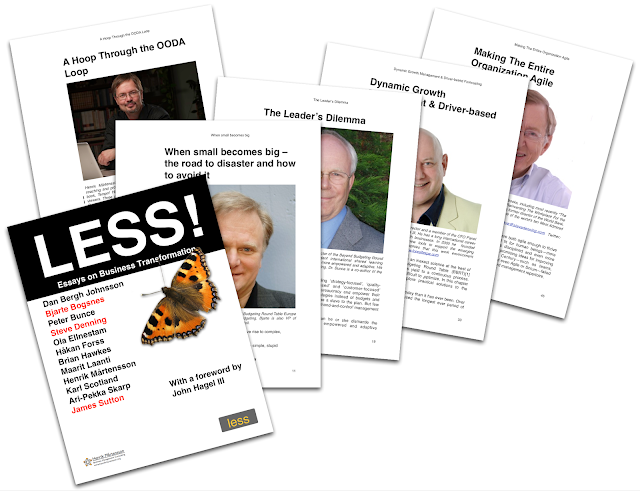LESS! is available on Amazon

LESS!: Essays on Business Transformation is now available on Amazon Kindle . The hardcover version of LESS! is available from Lulu and quite expensive ($46.53). The Kindle and ePub versions are just $6.89. We do not use DRM protection, so when you buy the book, it is yours. You can put it on any device you want, and on as many devices you want. Please keep the copies in your family though. I am very proud of LESS!. I am particularly proud of the fact that I did not write most of it. LESS! is a collaborative work, and working with the other authors has been a privilege I cannot adequately describe. One of my best adventures ever. LESS! is about building better places to work: Have you ever had a great idea crushed by the words, " we can't do that, because it's not in the budget "? Then you really need to read up on Beyond Budgeting. Bjarte Bogsnes, VP of Performance Management at Statoil and Dr. Peter Bunce, Director of the Beyond Budgeting Round Ta


